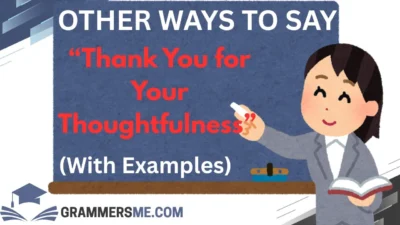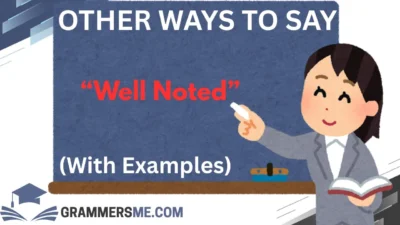In a world that thrives on quick communication, slang and abbreviations like “IKYFL” have become staples of online and text conversations. But when we’re trying to communicate with warmth, care, or clarity, especially in sensitive or important situations, it helps to have more thoughtful, expressive alternatives.
This guide offers 30 other ways to say “IKYFL”—each with meanings, scenarios, tone guidance, and examples—so you can stay expressive while sounding more personal and respectful.
What Does “IKYFL” Mean?
IKYFL stands for “I Know You F*ing Lying.”**
It’s a strong and emotionally charged phrase typically used in disbelief, shock, or when calling someone out. While it’s commonly used in humorous or exaggerated expressions online, it carries an aggressive and confrontational tone, and therefore isn’t always suitable for all audiences or settings.
People use IKYFL to react to something outrageous, unexpected, or seemingly untrue. It’s often used playfully among friends, but context matters—a lot.
Is It Professional/Polite to Say “IKYFL”?
Not at all.
Due to the explicit language and accusatory undertone, “IKYFL” is not considered polite or professional. It’s best reserved for casual, informal conversations with close friends who understand the tone and intent behind it. In any work or formal context—or when speaking to someone you’re not close with—opt for a kinder, more respectful way to express surprise or disbelief.
1. You’ve Got to Be Kidding Me
Meaning: A disbelief response to something surprising or shocking.
Detailed Explanation: This phrase is perfect for moments where something feels too absurd or unexpected to be true. It’s commonly used in both serious and humorous contexts.
Scenario Example:
Friend: “I lost my phone in the freezer.”
You: “You’ve got to be kidding me.”
Best Use: Casual conversations; friendly disbelief.
Not Use: When trying to remain professional or calm during serious situations.
Tone: Light, humorous, mildly dramatic.
2. No Way
Meaning: An expression of shock, denial, or surprise.
Detailed Explanation: Short and powerful, this is a classic response to something unexpected. It’s often used in texts and face-to-face reactions.
Scenario Example:
Coworker: “They gave me the promotion today.”
You: “No way! Congrats!”
Best Use: Anywhere from casual chats to friendly professional conversations.
Not Use: When tone needs to be very formal.
Tone: Warm, expressive, surprised.
3. Are You Serious Right Now?
Meaning: A questioning response when something doesn’t seem real or fair.
Detailed Explanation: This phrase adds a bit of drama and emotion. It can be confrontational or playful, depending on tone.
Scenario Example:
Sibling: “I borrowed your car and got a parking ticket.”
You: “Are you serious right now?”
Best Use: Close relationships, playful arguments.
Not Use: Formal environments.
Tone: Emotional, surprised, slightly incredulous.
4. Stop Playing
Meaning: A casual way of saying “you’re joking” or “no way.”
Detailed Explanation: Popular in African American Vernacular English (AAVE), this phrase signals disbelief or shock, usually in fun or surprise.
Scenario Example:
Friend: “I won backstage passes!”
You: “Stop playing!”
Best Use: Informal, close friendships, online conversations.
Not Use: Work or formal discussions.
Tone: Energetic, playful, expressive.
5. You’re Joking, Right?
Meaning: A direct way to question the truth of a statement.
Detailed Explanation: It expresses doubt and surprise, but keeps things light if said in a friendly tone.
Scenario Example:
Roommate: “We have a surprise rent increase this month.”
You: “You’re joking, right?”
Best Use: Light-hearted disbelief, even in slightly serious situations.
Not Use: When a respectful or sensitive response is needed.
Tone: Playful, slightly confrontational.
6. I Can’t Believe This
Meaning: Expresses deep surprise or frustration.
Detailed Explanation: This phrase is more emotional than playful. It can be used in situations of awe or disappointment, depending on tone and context.
Scenario Example:
Friend: “They canceled the concert last minute.”
You: “I can’t believe this. We planned for weeks.”
Best Use: When expressing genuine surprise or letdown.
Not Use: When a lighter or sarcastic tone is needed.
Tone: Emotional, sincere.
7. Come On Now
Meaning: Signals disbelief or gentle frustration.
Detailed Explanation: This is a low-key way to challenge what someone is saying. It can be warm and teasing or skeptical and annoyed.
Scenario Example:
Coworker: “I spilled coffee on the report—again.”
You: “Come on now…”
Best Use: Casual relationships; a calm call-out.
Not Use: When addressing authority figures or during serious conflicts.
Tone: Lightly frustrated, warm, or teasing.
8. What Did You Just Say?
Meaning: A sharp expression of surprise or challenge.
Detailed Explanation: This phrase stops the conversation in its tracks. It’s useful when you need someone to repeat themselves because you’re stunned or disbelieving.
Scenario Example:
Sibling: “I used your card to order pizza.”
You: “What did you just say?”
Best Use: When something truly catches you off guard.
Not Use: If you want to maintain a calm or neutral tone.
Tone: Surprised, slightly intense.
9. Get Out of Here
Meaning: An exaggerated way of expressing disbelief or excitement.
Detailed Explanation: Despite how it sounds, this phrase is playful and often affectionate. Think of it as saying “No way!” but with more flair.
Scenario Example:
Friend: “I got us tickets to the Beyoncé concert.”
You: “Get out of here! You’re serious?”
Best Use: Fun, casual settings with close friends.
Not Use: When being literal or addressing serious topics.
Tone: Playful, excited, energetic.
10. Is This Real Life?
Meaning: Used to express astonishment at a surreal or overwhelming situation.
Detailed Explanation: This phrase adds a whimsical or overwhelmed tone to your disbelief. It’s great when you’re speechless.
Scenario Example:
Partner: “We just got the keys to our new place.”
You: “Wait… is this real life right now?”
Best Use: Big life moments, surprises, or dramatic reveals.
Not Use: When you need to be direct or serious.
Tone: Dreamy, amazed, heartfelt.
11. You Cannot Be Serious
Meaning: A firm way to challenge someone’s claim or action.
Detailed Explanation: This phrase borders between disbelief and gentle confrontation. It’s clear and emphatic.
Scenario Example:
Coworker: “We need to stay two more hours.”
You: “You cannot be serious.”
Best Use: When calling out something unreasonable.
Not Use: When trying to avoid confrontation.
Tone: Strong, assertive, serious.
12. Don’t Mess With Me
Meaning: A casual warning not to joke or lie.
Detailed Explanation: This phrase can be light or serious, depending on how it’s said. Use it when you suspect someone is teasing or exaggerating.
Scenario Example:
Friend: “I matched with your celebrity crush.”
You: “Don’t mess with me.”
Best Use: With trusted people who know your humor.
Not Use: With strangers or professional contacts.
Tone: Protective, playful, cautious.
13. Are You for Real?
Meaning: A genuine check-in on whether something said is true.
Detailed Explanation: This is more heartfelt than aggressive. It shows surprise and a little vulnerability.
Scenario Example:
Sibling: “I’m giving you my PS5.”
You: “Are you for real? Like… really?”
Best Use: Emotional or exciting moments.
Not Use: In sarcastic or combative arguments.
Tone: Sincere, emotional, surprised.
14. Say It Ain’t So
Meaning: A wistful or playful reaction to bad news or shock.
Detailed Explanation: This one is dramatic but in a soft, nostalgic way. It’s often said with a smile.
Scenario Example:
Friend: “Our favorite taco truck shut down.”
You: “Say it ain’t so!”
Best Use: When expressing lighthearted sadness or disbelief.
Not Use: For serious or traumatic news.
Tone: Dramatic, vintage, fun.
15. Oh No, You Didn’t
Meaning: A sassy, often joking, reaction to someone’s bold statement or action.
Detailed Explanation: This phrase carries spice and attitude. It’s great for calling someone out with flair.
Scenario Example:
Friend: “I posted your old dance video.”
You: “Oh no, you didn’t!”
Best Use: With close friends; playful confrontations.
Not Use: When things are tense or serious.
Tone: Sassy, humorous, expressive.
16. You’ve Got Some Nerve
Meaning: A bold call-out when someone crosses a line or surprises you with audacity.
Detailed Explanation: This phrase can come off strong, but it’s effective when someone’s doing the most and you need to let them know.
Scenario Example:
Friend: “I borrowed your sweater… and gave it to my cousin.”
You: “You’ve got some nerve!”
Best Use: When playfully or seriously holding someone accountable.
Not Use: With people who may take it too personally.
Tone: Bold, teasing, sometimes sharp.
17. Nah, That Can’t Be Right
Meaning: A calm, grounded way to express disbelief.
Detailed Explanation: This one is great for when you’re surprised, but still open to clarification. It invites conversation rather than confrontation.
Scenario Example:
Coworker: “They want the entire project redone by Monday.”
You: “Nah, that can’t be right.”
Best Use: Work or casual contexts where you’re unsure.
Not Use: For emotional or highly personal moments.
Tone: Cool, skeptical, controlled.
18. What Are You Talking About?
Meaning: A blunt way to challenge a confusing or unbelievable statement.
Detailed Explanation: This phrase shows disbelief, confusion, or even light frustration. Be mindful of your tone—it can come off as confrontational.
Scenario Example:
Roommate: “I thought you said I could have your leftovers.”
You: “What are you talking about?!”
Best Use: With people you’re comfortable being direct with.
Not Use: When clarity or empathy is more important.
Tone: Direct, bewildered, reactive.
19. Excuse Me?
Meaning: A short, powerful way to request clarification—usually after a shocking or offensive statement.
Detailed Explanation: This can be polite or fiery depending on your tone. It’s perfect for those “did I hear that right?” moments.
Scenario Example:
Stranger: “You people always…”
You: “Excuse me?”
Best Use: When drawing a boundary or requesting clarification.
Not Use: In joking or light-hearted conversations.
Tone: Assertive, sharp, sometimes confrontational.
20. Hold Up
Meaning: A casual interruption that signals shock or confusion.
Detailed Explanation: This phrase invites a pause in the conversation. It’s playful, but also says, “Wait, what did you just say?”
Scenario Example:
Friend: “I think I’m moving across the country next week.”
You: “Hold up. Say that again?”
Best Use: In casual chats with friends or peers.
Not Use: In formal or sensitive discussions.
Tone: Chill, curious, surprised.
21. I Need You to Explain That Again
Meaning: A calm and slightly stunned way of asking someone to repeat themselves.
Detailed Explanation: This phrase suggests disbelief, but it’s non-aggressive. It works when you need more clarity to process something wild or unexpected.
Scenario Example:
Friend: “I accidentally sent the text to your boss.”
You: “I need you to explain that again—slowly.”
Best Use: When staying calm under pressure or confusion.
Not Use: For light-hearted disbelief.
Tone: Composed, patient, serious.
22. Wow, Just Wow
Meaning: A go-to phrase when you’re too stunned to say much else.
Detailed Explanation: This one packs a punch with only a few words. It can express awe, disappointment, or frustration depending on the tone.
Scenario Example:
Partner: “I completely forgot our anniversary.”
You: “Wow. Just… wow.”
Best Use: Emotional reactions that need space.
Not Use: When specifics or clarity are required.
Tone: Dramatic, emotional, flexible.
23. There’s No Way
Meaning: A softer version of saying “I don’t believe it.”
Detailed Explanation: It works well for everything from shocking news to joyful surprises. It’s versatile and polite.
Scenario Example:
Friend: “I ran into your ex at the airport.”
You: “There’s no way. That’s wild.”
Best Use: Friendly disbelief.
Not Use: If you need to challenge something seriously.
Tone: Light, playful, surprised.
24. That Sounds Unbelievable
Meaning: A more polished way to express doubt or awe.
Detailed Explanation: It gives a respectful nod to the speaker while still highlighting how wild the statement sounds.
Scenario Example:
Colleague: “I finished the entire presentation during lunch.”
You: “That sounds unbelievable. Nicely done!”
Best Use: Friendly or professional contexts.
Not Use: When trying to challenge or accuse someone.
Tone: Polite, impressed, neutral.
25. Did I Hear You Right?
Meaning: A gentle way to ask for confirmation of something surprising.
Detailed Explanation: This phrase is polite and effective for avoiding misunderstandings while still expressing disbelief.
Scenario Example:
Boss: “You’ll be presenting to the CEO next week.”
You: “Did I hear you right?”
Best Use: Work or formal settings.
Not Use: For sarcastic or humorous moments.
Tone: Respectful, inquisitive.
26. Run That Back
Meaning: A casual request to repeat something you’re not sure you heard correctly.
Detailed Explanation: This is a modern, slangy way of saying, “Wait, what?” without being confrontational.
Scenario Example:
Friend: “I matched with your crush.”
You: “Run that back one more time?”
Best Use: Texts, chats, or conversations with friends.
Not Use: In formal or professional environments.
Tone: Fun, curious, casual.
27. Not You Saying That
Meaning: A humorous or sassy way of calling someone out.
Detailed Explanation: This phrase is pure Gen Z energy—playful, sarcastic, and full of personality. It expresses disbelief but with flair.
Scenario Example:
Friend: “I think pineapple belongs on pizza.”
You: “Not you saying that right now!”
Best Use: Online convos or casual, funny chats.
Not Use: When being taken seriously is the goal.
Tone: Sassy, humorous, trendy.
28. You Wild for That
Meaning: A slangy way of saying “You’re being outrageous.”
Detailed Explanation: This phrase is affectionate yet expressive. It calls out bold behavior while keeping the tone friendly.
Scenario Example:
Friend: “I told them your middle name is Dorito.”
You: “You wild for that!”
Best Use: Among friends who understand your humor.
Not Use: Formal settings.
Tone: Playful, streetwise, casual.
29. Wait, What?
Meaning: A quick, confused reaction to something unexpected.
Detailed Explanation: This one’s short but full of emotion. It’s a universal way of expressing confusion or disbelief.
Scenario Example:
Coworker: “I thought you were quitting today.”
You: “Wait, what??”
Best Use: Texts, casual convos, memes.
Not Use: In formal or serious moments.
Tone: Surprised, informal.
30. You Trippin’
Meaning: A slangy way of saying someone’s acting confused or saying something outlandish.
Detailed Explanation: It’s bold, expressive, and usually playful. Common in AAVE and online culture.
Scenario Example:
Friend: “I threw out your leftovers. Thought you were done.”
You: “You trippin’—those were gourmet!”
Best Use: Among close friends or when being cheeky.
Not Use: Formal or unfamiliar conversations.
Tone: Chill, humorous, edgy.
Conclusion
Whether you’re reacting to something wild, funny, or flat-out unbelievable, how you say it matters. While “IKYFL” delivers a punch, these 30 thoughtful alternatives offer a range of tones—fun, warm, professional, and sassy—that help you express disbelief without crossing a line.
Thoughtful communication is always worth the extra effort, and you now have the tools to make every surprised reaction more intentional and meaningful.
FAQs
1. Is it rude to say “IKYFL”?
Yes, it can be. It’s considered vulgar and confrontational, especially in formal or unfamiliar settings.
2. What can I use instead of “IKYFL” in a professional email?
Try: “That’s surprising,” “I wasn’t expecting that,” or “Please clarify.”
3. What does “IKYFL” usually mean in texting?
It usually means someone is shocked or doesn’t believe what was just said—either seriously or playfully.
4. Can “IKYFL” ever be funny?
Absolutely! Among friends, it’s often used in a joking tone. Just be sure the other person gets the humor.
5. What’s the safest alternative for any context?
“You’ve got to be kidding me” or “I can’t believe this” are both expressive but safe for most conversations.




